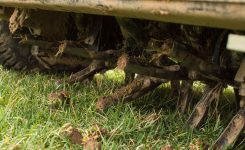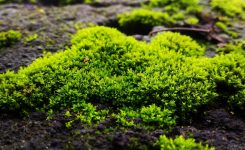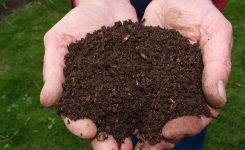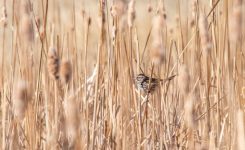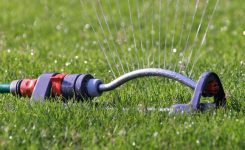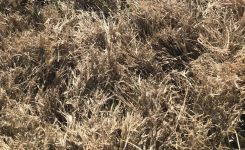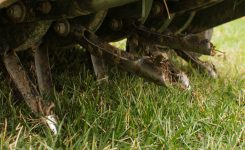Lawn Care Services, Lawn Treatment Solutions Blog
Should I Bag My Clippings When I Mow?
 Should I Bag My Clippings When I Mow?
Should I Bag My Clippings When I Mow?
It is usually (but not always) best to leave the clippings on the lawn.
Grass clippings decompose quickly and return nutrients to the soil. This can improve the appearance of your lawn without additional fertilizers. Mow as frequently as necessary to keep the clippings manageable by the natural decomposition process and your yard will look great and will be healthier.
When should I especially avoid bagging the clippings?
If a spray treatment was recently done on your lawn, then bagging the clippings will remove some of the solution that was sprayed on your lawn. This is something you want to avoid as you want all of the solution to stay on the lawn.
If you prefer to regularly bag your clippings then we recommend mowing at least once without bagging the clippings after a spray treatment so your lawn will get the maximum benefit from the lawn treatment that was done. You should also ensure that the treatment has been watered in from rain or irrigation.
Is there ever a time I should bag the clippings when I mow?
Yes, there are a few.
If you were extra busy and the grass grew a little too long before you cut it then we recommend bagging the clippings.
If the grass was really long, leaving the clippings on the lawn may result in rows of hay on the lawn. Hay on the lawn reduces air movement through the blades of grass.
When air isn’t able to move through the grass, pathogenic fungi may develop. This is something you want to avoid.
So, if the grass was too long when you cut it, bagging the clippings will be beneficial.
Take special care to bag the clippings if you have a Tall Fescue lawn in the Wake Forest/Rolesville area and the grass grew too long. Tall Fescue is at high risk for fungal disease through the summer months. Most fungal diseases develop on the blades of grass and are caused by warm temperatures and prolonged moisture. Late-day showers, high dew points, and improper irrigation cause prolonged moisture on the grass blades. Heavy clippings can hold moisture on the grass blades which may make a fungal disease more likely.
Prior to fall seeding of Tall Fescue lawns, we recommend cutting the grass a couple notches lower than the normal recommendation of 3.5” and bagging the clippings.
Removing some of the top growth allows more light to reach the seeds at the surface of the soil, which improves germination.
This also enables you to skip a week of mowing while the new seedlings are sprouting.
At the end of the growing season for your grass, you may want to bag the clippings for appearance.
The soil is cooler and soil microorganisms are not active so the clippings will not decompose quickly. The clippings will lay on the lawn for longer before decomposing.
Clippings laying on the lawn during winter usually will not affect the health of the grass, but you might not like what they look like on your lawn.
Through the winter when the clippings are not decomposing they are more likely to be tracked into the house by you and your loved ones.
Prior to a late winter pre-emergent application, we recommend cutting the lawn lower than the usual setting and bagging the clippings
Pre-emergent works by creating a barrier on the soil that stops weeds from growing immediately after they germinate which prevents an undesired weed problem during summer.
Setting the mower deck a little lower than normally recommended and bagging the clippings helps to remove some dormant top growth and other organic debris which improves pre-emergent coverage.
In situations when you are unsure whether to bag the clippings, contact your lawn care professional. Crownover Green is always eager to provide our clients with guidance to support a healthy and beautiful lawn.
How high should I mow my lawn?
Mowing your lawn at the correct height is critical for creating a healthy and beautiful lawn. Visit our How High Should I Mow My Lawn? blog article to learn more: https://crownovergreen.com/2019/11/how-high-should-i-mow-my-lawn/

